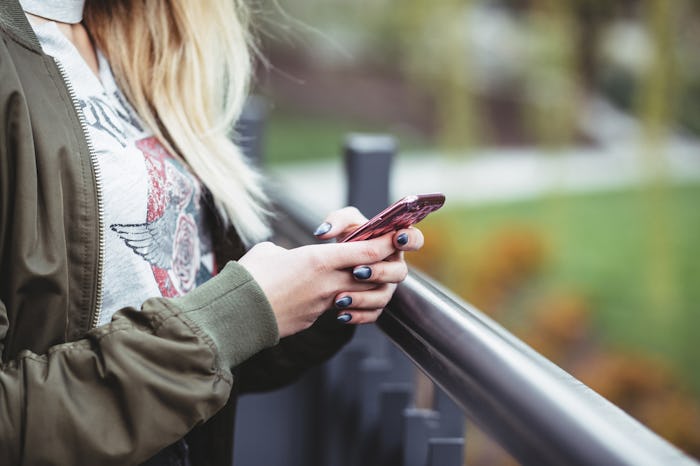Snapchat may have revolutionized the social media game by making short-lived video stories and rainbow vomit filters a thing, but the app's newest feature has some users worried. That's because Snapchat recently launched Snap Map, a feature that lets users share their precise location in real time on their friends' interactive maps, according to ABC News. The feature has been promoted as a way to help users connect with their friends in a new way, but sharing location info can also have safety implications. Is the Snapchat Snap Map tracking you all the time? Snapchat's communication team told Romper via email that the feature is one you have to specifically opt-in to, which means that your location will only be shared when you want it to be. But it also seems important for users to actually ensure they know how to use Snap Map properly before turning the feature on.
In a statement to Romper, a rep for Snapchat explained that sharing your location on Snap Map is completely optional, and that by default, the feature is turned off to ensure user privacy. According to The Independent, users can launch Snap Map from the home screen, and will then be prompted to either share their location (either with everyone they are friends with, or a select few). Want to keep your information hidden? Choosing Ghost Mode will ensure that your location remains private.
Staying in Ghost Mode (or switching back to it if you've previously shared your location) will ensure that no one else on the app can know where you are, and anyone who doesn't want their location shared should be totally fine to leave it at that. But given the app's popularity among young users, parents and privacy advocates are concerned that it might not be enough, especially if younger Snapchatters might not be aware of the implications of sharing their location, or if they might not realize they have to turn the feature off if they've already used it.
In a recent blog post, children's internet safety advocacy group Childnet International explained how the new Snapchat feature works, and outlined the various options available to users, as well as what the consequences could be of each one. Leaving Snap Map turned on, for example, could potentially allow anyone a user is friends with on the app to see all kinds of personal location data about them — where they live, where they work or go to school, as well where they happen to be at any given time. While that might not be an issue if the only people who are seeing that information are those who you know and trust in real life, it may be concerning if you have Snapchat friends who are essentially online strangers. And for young users who may not be as savvy about internet safety, giving them the option to share this kind of identifying information might not be for the best.
Of course, it sounds like Snapchat's intention with the feature was just to encourage greater sharing and social activity among users, and by requiring all users to specifically choose to turn the feature on, they've clearly taken steps to ensure that only those who specifically want to share their data with others will do so. But for anyone who is concerned about their info — or for parents worried about their children who use the app to connect with friends — Childnet International has some suggestions.
For one, the group advises that in general, users avoid sharing their location in social media, and that anyone who does choose to opt-in to a feature like Snap Map makes sure that their information is only being shared with people they actually know in person. Snap Map users should also be sure to check their settings regularly, and to make sure that they only use the feature when the information being shared is safe (as Childnet International pointed out, location-sharing features could potentially "lead people to your house," so it's best to only use them when you're somewhere public or if your location is one you'd feel comfortable sharing).
A rep for Snapchat confirmed to Romper though that even on the most open privacy setting, Snap Map information can only be seen by people users have already added as friends, meaning that so long as users aren't adding people they don't actually know, the information they share shouldn't be risky. And for most users, this should be the case: according to Snapchat, "the majority of interactions on Snapchat take place between close friends."
But what might be a bit more unnerving for parents of Snapchatting teens is that, while the app is a big hit with the young crowd, many adults seem to be somewhat baffled by how to properly use it. According to ABC News, it's a good idea in general for any parents who have kids on Snapchat to know who their children are friends with, and to communicate with their kids directly about the potential consequences of who they choose to add. Another option? Join Snapchat yourself and add your child as a friend. (If you're not exactly sure how, The Next Web recently shared a handy step-by-step Snapchat how-to guide for parents confused by the app.)
The more our lives increasingly become shared online, the more that concerns about privacy and safety seem to be inevitable. While it's understandable that a feature like Snap Map — which has the capability of sharing users' precise location information — might make users feel uneasy, it also sounds like it's not difficult to ensure that your information remains private. And like any feature on a social media app, if you do decide to use it, it's always a good idea to make sure you know how it works.
